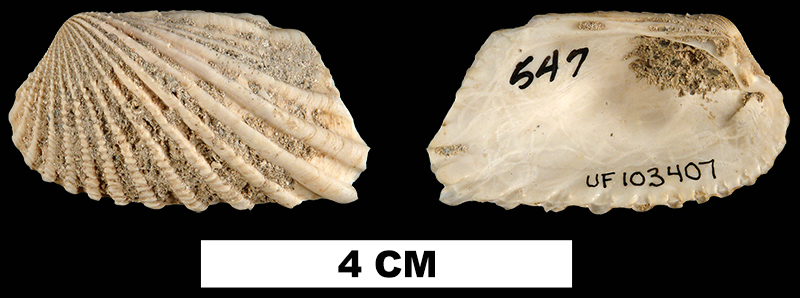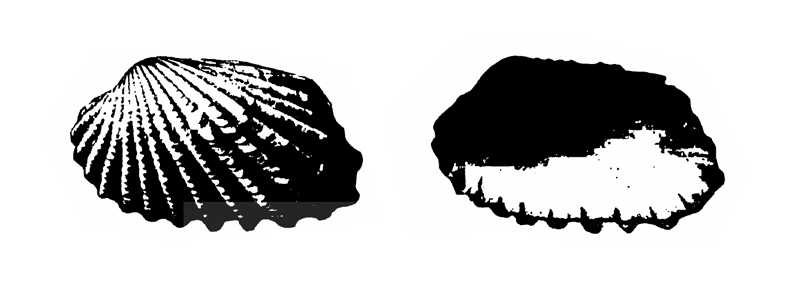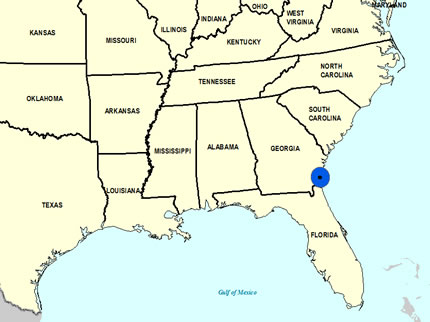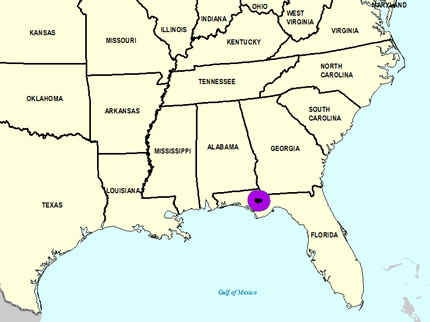
Carditamera apotegea
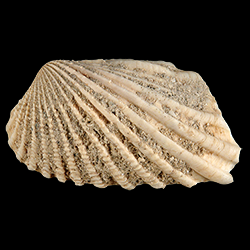
- Phylum: Mollusca
- Class: Bivalvia
- Order: Carditida
- Family: Carditidae
- Genus: Carditamera
- Species: Carditamera apotegea (Gardner, 1926)
Geological Range
Early Miocene to Middle Miocene; Extinct.
Paleogeographic Distribution
Northern Florida to Georgia.
Remarks
Original Description (from Gardner, 1926, p. 88-89):
"Dall described C. tegea as follows:
'Shell elongate inequilateral, with low, rather anterior beaks and about 16 strong radial more or less carinated and imbricated ribs, the anterior ribs more distinctly and regularly crenulate, the posterior more irregular; the interspaces about as wide as the ribs, and on the anterior half of the shell squarely channeled; posterior end of the shell produced and pointed, anterior end rounded, base mesially slightly concave; lunule small, deeply impressed, the anterior lateral tooth very prominent; hinge teeth normal, rather slender; inner margins of the valves deeply fluted. Length 43, height 24, diameter 22 millimeters. The beaks are situated at about the anterior sixth of the shell.
The original figure of this species in Part I was taken from a silicious pseudomorph, which perhaps had been derived from a specimen which had been somewhat worn before being fossilized. Though certainly identical with the Chipola specimens from which the description is written, the sculpture is less well preserved and smoother.'
Dall's description was made for the most part from the specimens from Chipola River, though his type locality is Ballast Point. The earlier species is much more elongated transversely than C. apotegea and probably never attains so great a size. The radials are more commonly 17 or 18 in number than 16. From the anterior margin to the posterior keel they gradually increase in prominence and become less and less closely spaced. There is a gradual transition, too, from the nodose incremental sculpture of the anterior area to the posterior sculpture, characterized by exceedingly fine incremental striae and, especially in the young forms, by here and there a spinose process. There are generally two or three subequal costals which radiate from the umbones to the posterior basal angle and which are coarser and more distantly spaced than any others upon the shell. Behind them, in most individuals, are two relatively fine lirae and behind these a costal almost as coarse and as spiny as those outlining the posterior angle. The marginal rib is also spinose but not so coarse as that next to it. The costals are all of them abruptly arched and form sharp angles with the flattened interspaces. The muscle impressions are large and very distinct, though united by an obscure pallial line. The figured specimen from Ballast Point, which serves as the type of C. tegea Dall, measures 33.0 millimeters in latitude and 16 millimeters in altitude with a semidiameter of 5.5 millimeters.
Dimensions of right valve: Altitude, 23.5 millimeters; latitude, 41.0 millimeters; semidiameter, 11.3 millimeters. Dimensions of left valve of another specimen: Altitude, 22.5 millimeters; latitude, 40.0 millimeters; semidiameter, 11.3 millimeters.
Cotypes: U.S. Nat. Mus. No. 352476.
Type locality: No. 2211, Alum Bluff (lower bed), Liberty County, Fla.
The young forms are higher relatively than the adults and much more inclined to expand posteriorly."
To access this description in its original formatting through Google Books, click here.
Stratigraphic Occurrences
- Middle Miocene
- Coosawhatchie Formation (Charlton Member) (GA)
- Early Miocene
- Chipola Formation (N. FL)
